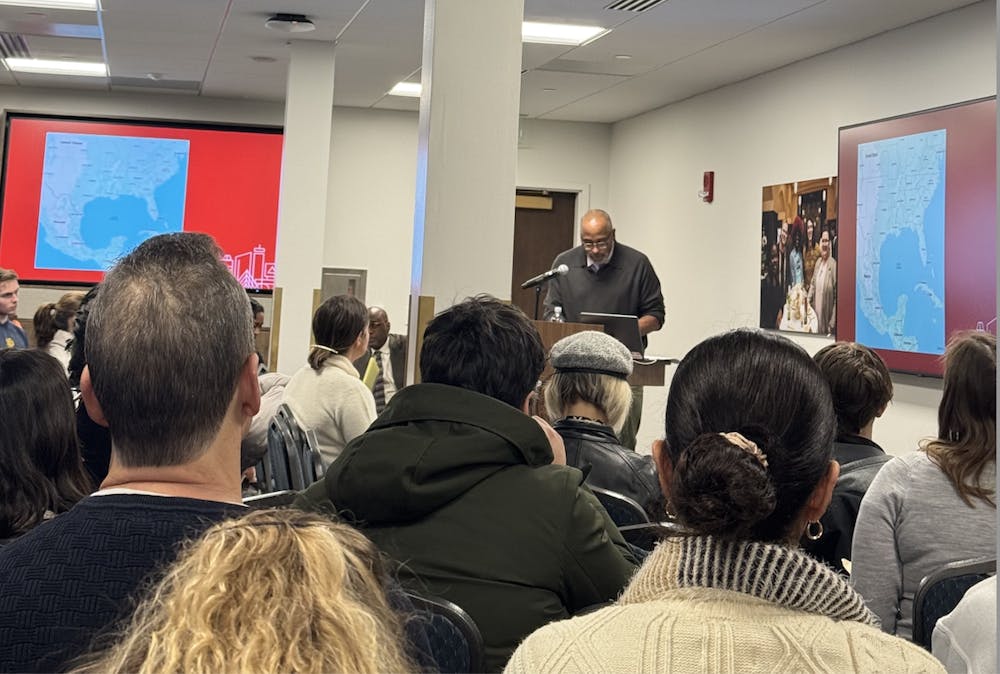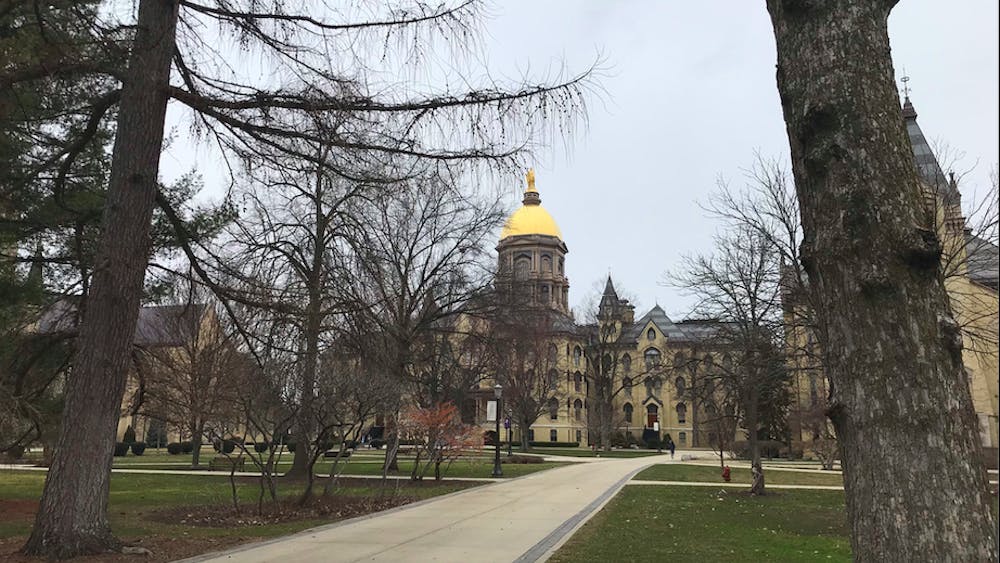During his Wednesday lecture, Harvey Young, dean of the College of Fine Arts at Boston University, dissected the intersection of racial justice, public perception and political movements, offering an analysis of recent resistance to an American commitment to anti-racism.
The lecture, hosted by Notre Dame's College of Arts and Letters and titled “How Anti-Racism Lost the Popular Vote: Race, Performance & the Idea of America," provided a historical and cultural examination of resilience and the evolving landscape of activism.
Young began by acknowledging the optimism that followed the widespread racial justice movements of 2020, triggered by the death of George Floyd. “The petitions and calls for change reached most organizations and institutions,” Young said, referring to the post-2020 activism surge.
Nevertheless, he noted, a few years later, those very commitments have been met with strong opposition, legal challenges and policy reversals.
At the heart of Young's lecture was a close examination of the word resilience. “Resilience, the word that I'm partial to because, like race, it can be contested, but unlike race, it is incredibly difficult to deny,” he said, suggesting that the term is central to America's self conception.
Resilience, Young argued, is a coiled spring: able to absorb extreme pressure without breaking and harnessing said pressure to surge forwards with momentum.
He applied this understanding of resilience to a reading of progress and resistance in American history, suggesting that while the racial justice movements of 2020 sought to bring about substantive change, the backlash that followed — manifested in political rhetoric, legal action against DEI initiatives, and the resurgence of nationalist narratives — illustrates the cyclical nature of progress and therefore necessity of resilience.
“We are seeing a race to unwind some of the initiatives and pledges that were made previously,” he said, furthering his suggestion of this cyclical nature of progress by acknowledging a recent pushback against DEI commitments.
“[Resilience is seen in] the complicated and messy history of race and resiliency of these movements and with calling for change and tradition at the same time. It's that tension, it's that binary, it's that stress. It’s the recoiling, the pullback and straight forward, it's that dynamic that makes this country,” Young said.
Young connected the origins of anti-racism discourse and its framing in contemporary political debates to an increasing hostility towards DEI programs. He highlighted the shift from institutional declarations of solidarity to the recent wave of censorship and exclusion related policies, such as book bans, affirmative action rollbacks and racial discourse in public education.
Young then moved to speak on the performative aspect of political discourse. As a scholar of performance studies, he has explored how narratives of American greatness, for instance the M.A.G.A movement, have historically masked exclusionary policies and systemic discrimination. The image of America, he suggested, is constructed through selective storytelling — a carefully curated performance that often obscures uncomfortable truths.
He also addressed the generational divide in activism and resistance, noting that while younger populations have been at the forefront of anti-racist advocacy, institutional and political structures have not evolved at the same pace. He cautioned against the risk of ideological rigidity, accentuating the importance of dialogue and coalition-building in sustaining momentum for social change.
Additionally, Young explored the role of universities and cultural institutions in shaping conversations regarding race and identity. He argued that while many academic institutions have taken steps towards greater inclusivity, there remains a significant gap between commitment and action.
The concept of safety also emerged as a central concern in Young's lecture. He maintained that discussions on safety have become conflated and confused with personal agreement, particularly in academic spaces.
“As educators, one of our responsibilities is to introduce our community to a range of ideas and to give them access to contrasting perspectives and points of view. How are we to understand this obligation if a student's conception of unsafe more closely resembles what we might describe as disagreement?” Young questioned.
The erosion of open discourse, he argued, has been exacerbated by the broader political climate where “everyone is painfully aware of the all-out assault by the executive branch on DEI, critical race theory, woke-ness and practically any critical practice that challenges the myth of meritocracy.”
By reinforcing the importance of engaging with difficult conversations, Young shared that a commitment to resilience may also include a willingness to confront discomfort head on.
Young concluded the lecture by asking, ”how does the fight for racial justice continue in a climate where the language of anti-racism itself is under siege?” Young's response to this question stressed the necessity of resilience — not merely in weathering setbacks, but in strategically adapting to new challenges. He urged the audience to recognize that while the progress may be met with resistance, the arc of history is shaped by those who persist in the pursuit of justice.
Through efforts to engage with history, embrace discomfort and foster informed dialogue, he suggested, the pursuit of a more just society remains both necessary and achievable.










